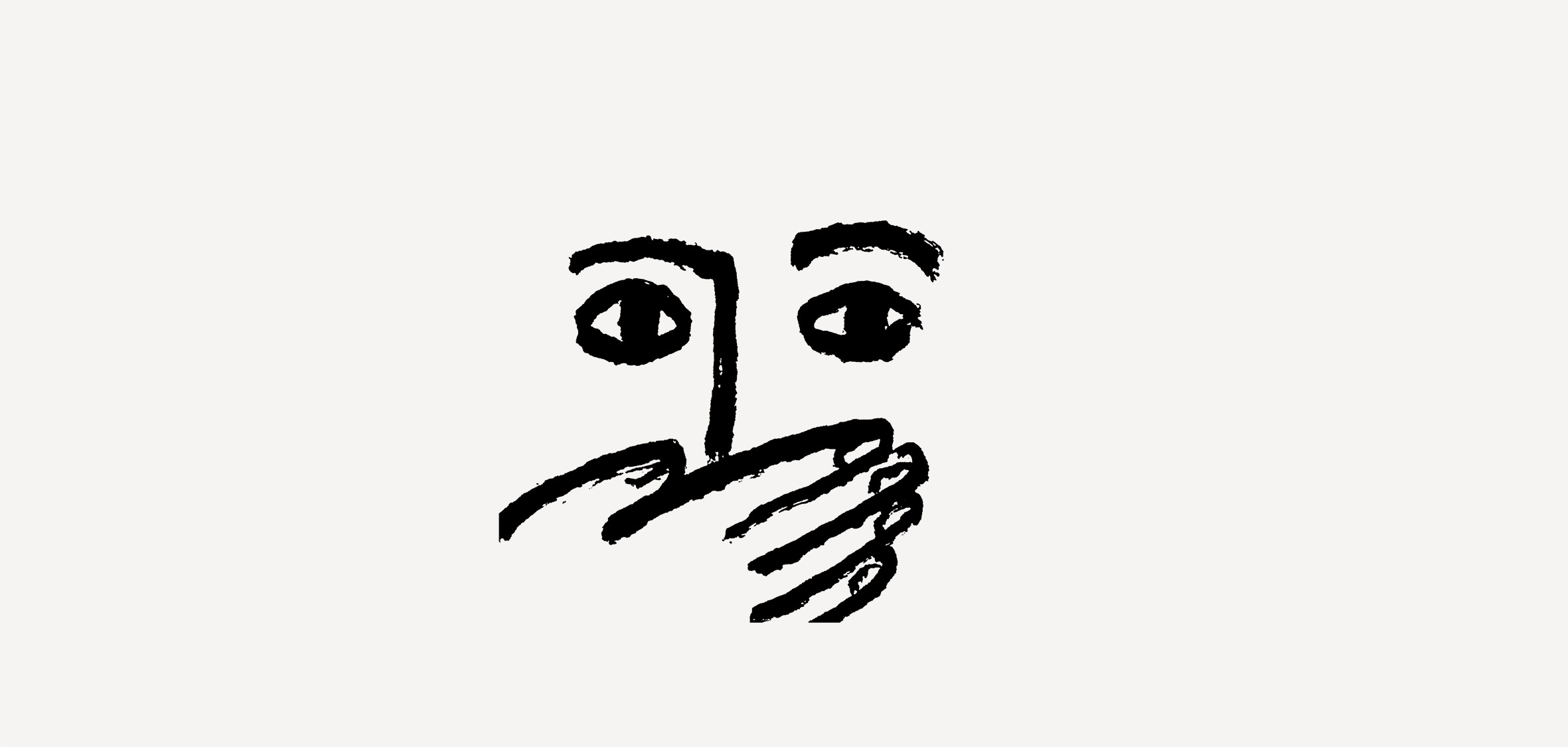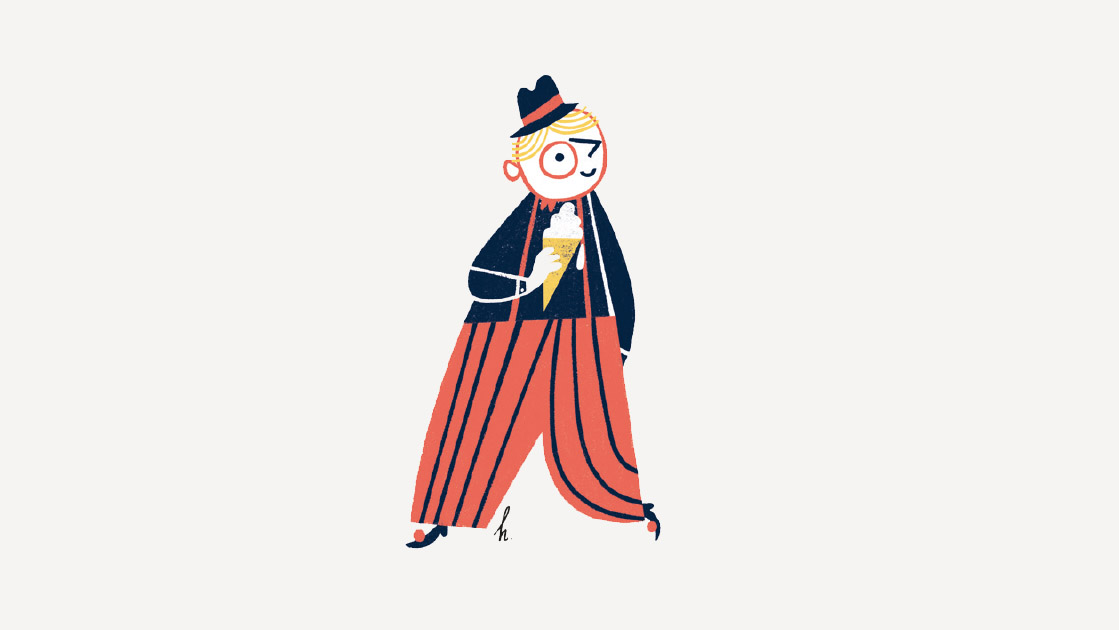
Agata Sikora writes frankly about the shortcomings of authenticity and the advantages of artificial smiles.
These are strange times: those who built the systems pretend to be their vanquishers; sexists claim to be feminists; heiresses of fortunes pose as self-made women; and immature perpetrators of violence are presented as distinguished actors who are simply impersonating abominable characters. In reference to the initiation of Kevin Spacey’s trial, Tomasz Stawiszyński wrote recently that we are living in a “culture of appearances” which “favours facades and rewards those […] who thrive at this specific social game that relies on making an impression.” Popular opinion often blames television and social media for this situation, for creating a ubiquitous vanity fair, a dog-eat-dog world of images, profiles and ‘likes’.
But when was this mythical era in which the social mask did not obscure the face, and people presented themselves as they really were? After all, throughout the 20th century, counterculture criticized the bulk of society for its artificiality and suppression of authenticity. In the Victorian era, men played the role of tender fathers and husbands who safeguarded the sanctity of hearth and home, and at the same time considered the brothel to be the proper place for sexual gratification. Courtiers of all ages knew that gestures and smiles always came down to politics because, as Jean de La Bruyère wrote in The ‘Characters’ of Jean de La Bruyère: “At court people go to bed and rise only with a view to self; […] it is for this they think, speak, are silent or act […].” Benjamin Franklin, meanwhile, advised decent townspeople to show themselves to be worthy of credit: “The Sound of your Hammer at Five in the Morning or Nine at Night, heard by a Creditor, makes him easy Six Months longer. […] It shews, besides, that you are mindful of what you owe; it makes you appear a careful as well as an honest Man […].”
Perhaps, then, the relevant question is: why do we yearn for a world in which no gap exists between the ‘real person’ and the image created for the benefit of others? Why are we so obsessed with sincerity?
Sincere wine
After all, sincerity is not one of the fundamental Judeo-Christian values. The Church Fathers didn’t write about it, nor is it among the cardinal or theological virtues. The eighth commandment prohibits lying to disadvantage someone else, but it does not require a person’s expression to be consistent with their inner truth. The ancient Greeks didn’t distinguish between lies and fiction, valuing poets as well as skilful tricksters (such as Odysseus).
The word ‘sincerity’ only appeared in European languages from the 16th century, when it referred primarily to liquids and metal ores: ‘sincere wine’ is undiluted, pure. With regard to people, it was initially used metaphorically, indicating their simplicity and their readiness to stand before God with an open heart. Sincerity became primarily a religious value, important for Protestants condemning Catholic hypocrisy and inquisitors interested in the ‘real’ beliefs of those they were interrogating.
Over time, however, it found its way into common usage and began to crop up in conversations between lovers, family letters, and novels. In the 18th century, the idea emerged that it was no longer enough to pay conventional compliments to the woman you loved: it was necessary to demonstrate the expression of ‘real’ feelings through crying, emotional displays and constant self-analysis. As Jean-Jacques Rousseau declared in the famous introduction to his autobiographical Confessions, man should present himself to his fellow men “in all the truth of nature”. “I know the feelings of my heart, and I know men,” he continued. “I am not made like any of those I have seen; I venture to believe that I am not made like any of those who are in existence.”
The Romantics followed in Rousseau’s footsteps, convinced that they were unique and that they should express their uniqueness, even if it posed a challenge to society. In this context, sincerity – that is, the revealing of one’s subjective experiences – began to be valued more highly than the norms of education, good taste or consideration of others’ feelings.
Despite the dilemmas and sorrows of Young Werther, we adopt an ironic view of his tale, still pursuing the romantic fantasy he helped to construct – that of an authentic life, scorning convention, image and pretence.
In spite of yourself
So, honestly: how many times have you bitten your tongue in the last week? Plastered on an artificial smile? Recited a smooth cliché that contradicts how you feel? Done something you really didn’t want to? Tried to give the impression of someone who’s professional / happy / well-rested (delete as appropriate)?
Have you ever been authentic enough to admit in a cover letter that you’re applying for an unambitious job at an uninspiring company because you need the money? Have you ever told a child that their drawing is just a plain old scribble, not a wonderful portrait? Have you explained to a heartbroken friend that they got themselves into the mess they’re in?
Each and every one of us, every day, in thousands of different ways, conforms – we lie, manipulate, automatically observe convention. We stretch the truth, create and embellish it. By fetishizing sincerity and authenticity, aren’t we setting up unrealistic challenges for ourselves, and at the same time exposing ourselves to inner conflict and frustration?
Nice to meet you
Adam Seligman and his colleagues, the authors of the book Ritual and Its Consequences: An Essay on the Limits of Sincerity, suggest that there are two ways to understand communication and expression. Sincerity, on the one hand, requires a description of “as is”: giving expression to what you really think and feel. Ritual mode, on the other, is based on the “as if” principle: an individual should behave according to the convention provided for a given situation, not seeing it as an accurate description of their inner self. For instance, when we say “Nice to meet you”, everyone knows we’re not conducting self-analysis, but simply using a ready-made formula. It doesn’t matter what we really feel – the important thing is that we’re sending the other person a conventional courtesy signal, and they know how to read it.
According to the authors of Ritual, both modes appear in all cultures. Contemporary Westerners, however, value expressing the truth about themselves to such an extent that they reject the ritual logic outright, considering it to be inferior to “as is”. Thus, they become hostages to sincerity.
And it is sincerity that turns human relationships into one big process of discovering the truth about oneself and others – cooperating and being together in an incessant orgy of words and analysis, or ploughing a fallow field of communication. It forces us to constantly question our feelings and reactions (“Is this what I really want, or is it just the done thing?”), deeming the state of uncertainty undesirable. It imposes the obligation to express our ‘true feelings’ (the Holy Grail of therapy culture), at the same time calling them into question if they are perceived to be insufficiently spontaneous, too conventional. This leads to a vicious circle: in public situations, we try to emphasize our sincerity and authenticity… but not too much, because then it comes across as insincere and inauthentic (professional performances of this type can frequently be seen at the Oscars, or in American political speeches).
Ritual, on the other hand, gives us more inner freedom. The conscious use of convention allows us to separate ourselves from our public image and simultaneously protect our own subjective space. This mode doesn’t demand absolute self-determination; it leaves room for ambivalence and uncertainty. It is based on recognizing our own imperfections and those of the world around us – no one has to pretend that the mask they are using is their ‘real’ face.
And even if it doesn’t protect us from the builders of systems who pretend to be their vanquishers, the sexists claiming to be feminists, the heiresses of fortunes posing as grafters, and the violent men who are regarded as distinguished gentlemen, at least it makes us more resistant to their spells. It even allows us to take it for granted that, since leaving the role of Frank Underwood, Kevin Spacey has continued performing – only this time, he’s playing the role of a witty, amiable actor.
Translated by Kate Webster









